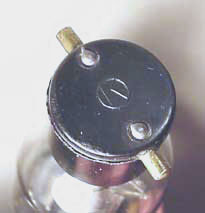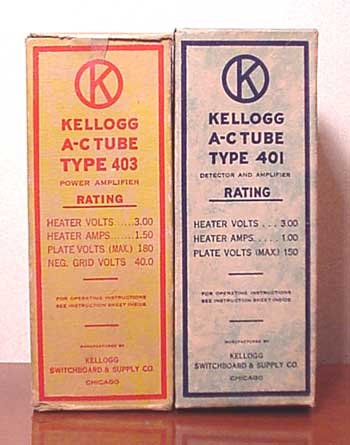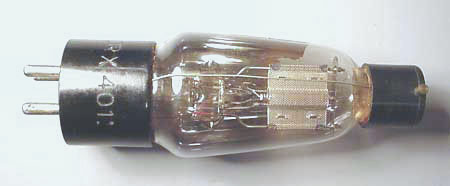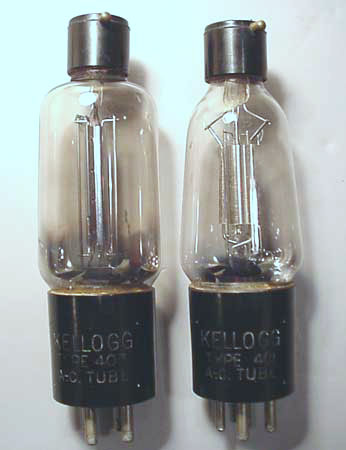|
McCullough/Kellogg 401 and 403 Tubes |
|||
|
|
 |
||
| By the
mid-1920's, it was becoming increasingly obvious that the ultimate
public acceptance of radio hinged on the availability of sets which were
powered directly from the AC power line. The mess and expense of
batteries would not be tolerated by the consumer indefinitely. A
key to this process was the development of tubes which were suited to AC
operation.
The McCullough type 401 tube was first advertised in 1925, while the type 403 appeared later. Frederick McCullough, formerly with Westinghouse, formed a company to market this tube under his own name, though it appears that most of them were actually made by the Kellogg Switchboard and Supply Co., a major telephone equipment manufacturer. The earliest tubes were marked as McCullough tubes, while later ones bore the Kellogg name. Otherwise, they are identical. Some very early examples had brass bases. Some McCullough-marked tubes had the Kellogg logo on the top cap, some did not. The most unusual feature of these tubes is that the heater connections were brought out at the top of the tube through a Bakelite cap. This arrangement made it possible to substitute these tubes for the battery type tubes in existing radios, with the heater power supplied by an above-chassis wiring harness. A very few radio companies used these tubes in new designs, the best known being Marti, examples of which are shown here and here. In these sets, the heater power was brought up from below, giving the set a most exotic appearance. The type 401 (at the right in the photo above) was a low-level amplifier, and the type 403 was intended for audio output use. Both are triodes, using indirectly heated cathodes. Once the UY-227 was introduced in 1927, what little demand existed for the double-ended Kellogg's virtually evaporated. |
|||
 |
|||
 |
|||
| This tube is equivalent to the McCullough/Kellogg 401's
made by Gold Bond designated as an RX401. The
internal structure is much different from the McCullough and Kellogg
tubes and appears to that of the ubiquitous type 27
triode.
What is interesting is that they ran two wires up the outside of the bulb and into the top cap which allowed the standard type 27 tube structure to serve in this application. The external wires had enough resistance to drop the 3.0 volt heater supply voltage used by the McCullough tubes to the 2.5 volts used by the 27. This tube was, obviously, made for replacement use in the very few radios that used McCullough/Kellogg tubes, probably at a much cheaper price. |
|||
